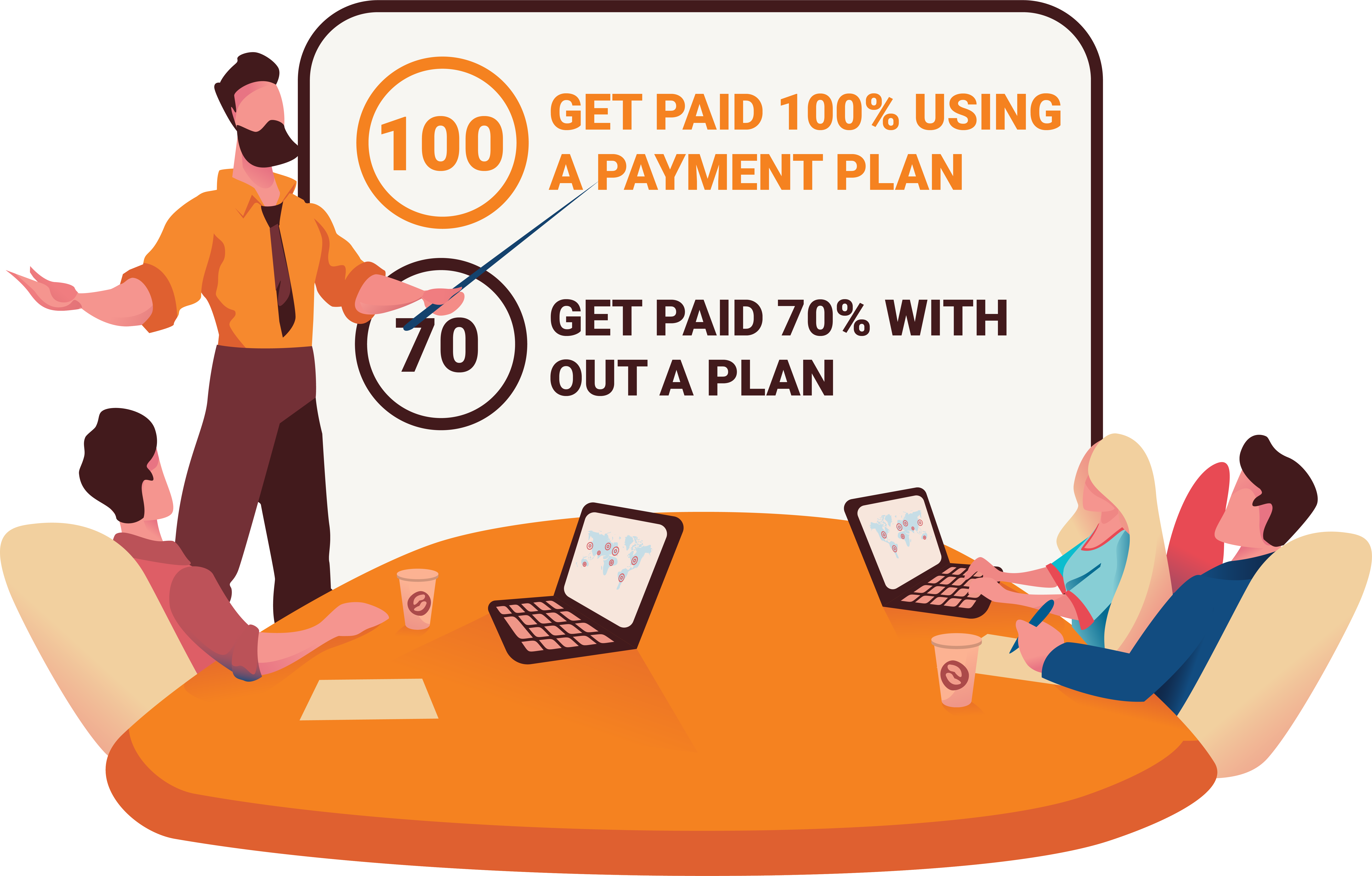5 Psychology Tricks to Improve Patient Billing

Encouraging your customers to pay their bills on time can be difficult. Many barriers stand in the way of prompt and accurate payments, including financial stress, confusion or discrepancies in overcharges, and forgetfulness—undoubtedly the most common reason for late payments. The human brain is complicated, and each of your patients has a lot on their mind. But even though these human errors are understandable, delayed payments cause a headache for the billing cycle and ultimately affect your business’s bottom line.
The good news is that late payments are not totally out of your control. You can overcome all of these patient billing barriers to timely payments with the application of a few simple, ethical, and effective psychology concepts that will help solicit more timely payments by meeting your customers where they’re at. Instead of taking hours of additional work to implement, many of these strategies only require minor tweaks to the way your medical practice runs.
Read on to learn how you can use these tricks in your revenue collection strategy to elicit faster payments and a tighter billing cycle.
How Psychology Can Help Improve the Patient Billing Process
1. Color Theory
Nearly everyone remembers reading the color guide of a mood ring as a kid: a blue mood ring means the wearer is calm, while red indicates anger or passion. In the same way that the colors of a mood ring (allegedly) tell us about our own moods, seeing and experiencing certain colors can (actually) work to shift our mood and draw our attention to specific signs, objects, or text. Color can also help us organize and group concepts.

What does this have to do with patient billing? The more strategically you incorporate color into your mail and digital statements, the more control you have over when and how your patient pays their bill. Add an eye-catching red color to the outstanding sum owed and a friendly green to the information about how to make a payment. The amount of literature on color theory may seem overwhelming, but luckily, there are some third-party billing services (like MailMyStatements) that will craft your statement design for you with color theory in mind.
2. The Rule of Seven(ish)
Because your customers have so many things to do each day on top of their jobs and childcare, it’s not entirely their fault when they forget to respond to your healthcare practice’s e-statement, pay their bill, or call your office regarding the incorrect charges on their statement. After all, we’re only human!
But even though mistakes and overdue bills all happen from time to time, it doesn’t need to be this way. Sending multiple reminders across several different channels will cue your customers to remember their unpaid bills better. Be sure to remind them in as many ways as you can, within reason. This can include their original e-statement, a text message, a paper mailing, a phone call, and any other communication channel you have at your disposal.
But how many reminders is the charm? A common practice in the world of marketing is referred to as the “Rule of Seven,” which means that your audience needs to see your message a total of seven times across all of your marketing channels. But because an overdue bill comes with actual, personal consequences, and your consumers have consciously taken notice of the first reminder (rather than subconsciously seeing a generic marketing message on a billboard), three to four times should do the trick for most customers.
3. Provide eStatement options
Whether you already have a digital patient payment system or plan to implement this option at your practice, you can easily integrate estatements with this type of technology.
Today, even the most traditional patients likely prefer digital statement options because of their convenience and simplicity. A 2021 report indicates:
- 85% of customers prefer to pay their medical bills electronically
- 78% of patients want digital or contactless healthcare options to remain in place post-pandemic
- 75% of patients want to enroll in healthcare estatements, including 89% of customers younger than 40
- 56% of patients would consider switching providers for a better healthcare payment experience
- 28% of patients do not have an estatement option with their current providers
Despite these preferences, only 29% of patient respondents said their current providers offer estatements and other electronic payment capabilities. That gives you an opportunity to reach an audience of patients who are not receiving their desired payment and statement options from their current practices.
4. Allow a small payment first
Many of your patients could be delaying their payment because they know they aren’t able to pay their bills in full. They might also be waiting until their next paycheck clears to take care of rent, bills, and groceries.
Like the other barriers to timely bill payment, this hesitancy to make a payment because of financial stress can be overcome. First, you’ll need to offer your patients a payment plan where they pay their bills gradually over several months. However, rather than starting with the biggest sum of money as the first payment, start with a smaller amount. A study published in the Journal of Marketing Research suggests that paying off a small amount of debt first can motivate us to continue making payments and ultimately finish the job sooner.

With a graduated payment plan, your healthcare practice will be more likely to receive steady, on-time payments, and your patients will feel better about paying down their daunting medical bills.
Bonus Tip: Check out our free eBook on Patient Payment Plans here!
5. Offer multiple payment options
Similar to offering a graduated payment plan, you want to be sure to anticipate and respond to the barriers that your patients face regarding paying their bills. If your e-statements and reminders are even slightly unclear, your customers could be delaying making a payment because they simply don’t understand how to do so.
In addition to being explicit in every communication about how your customer should pay their bill, be sure to offer more than one way to pay. QR codes, online payments (which work best with credit-card-on-file technology), pay-by-check, and more modern solutions like PayPal will ensure that each of your customers has a payment option that they already understand. The task of learning new technology is a barrier in itself, so by offering familiar options, you’ll increase your chances of a paid bill.
Bonus Tip: Especially as patients get older, any sort of disruption in routine can easily become a source of anxiety as well. Be sure to check in with your customers each year to update their communications and bill payment preferences. You might be surprised to find that many still prefer paper mailings and paying by check.
Final Thoughts
As the healthcare industry continues to face unprecedented challenges in the near future, your practice’s patient billing systems do not have to take the hit. With technology helping healthcare adapt to new challenges, it’s important to take advantage of these capabilities and appeal to patient wants and needs.
MailMyStatements is a technology-driven patient statement and payment vendor who offers managed billing needs from payment plan capabilities to statement design. Get in touch with us today to learn more about our various solutions to help increase patient collections.
![]()



